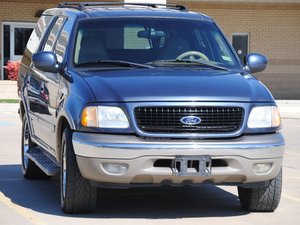The White smoke comes out of an exhaust pipe - quite normal phenomenon when warming up of the cold engine. This is not smoke, it’s steam! Vapour is natural result of fuel combustion. While the exhaust system is still cold the vapour is partially condensed so it becomes visible, and on a cut of an exhaust pipe usually there is water. In the process of warming up the engine and the exhaust system condensation decreases. The colder the environment is the denser becomes the vapour. Vapour is formed at temperature below 10 C when the engine is well heated-up, but when it’s freezing at minus 20-25 C degrees the smoke becomes dense and white, with a gray shade. Color and a saturation of the smoke are also influenced by air humidity: the higher, the denser the vapour is.
If the vapour is visible even when it’s warm and on well heated-up engine, probably, it is an evidence of that the cooling fluid got in cylinders. The colour of the smoke depends on structure of a cooling fluid, weather, illumination and on quantity of cooling fluid in a combustion chamber. It can sometimes get a gray shade which looks like smoke from oil burning. But in difference from the oil smoke which leaves a bluish fog the vapour is quickly dissipated.
To the person without sufficient experience, it is difficult to determine by appearance what is actually the source smoke, therefore it is possible to use an "antiquated" way to check. On the well heated-up engine cover the cut of an exhaust pipe with a sheet of white paper, so that the condensed vapour in the form of water drops will appear on the paper. The drops will evaporate gradually without any oil spots. If this simple test confirmed that it’s the water vapour which comes out of the exhaust system not the oil smoke, so it is necessary to take measures for failure elimination when cooling fluid penetrates into cylinders.
Liquid can get to cylinders usually through the layer pad of the head of the block when it’s too loosen (during the winter period there is an evidence of leakage on the block and head joint), it can also happen due to the burnout or more rarely as a result of formation of microcracks in the head or on the cylinder block. Besides these defects cause penetration of exhaust gases in cooling system forming gas blocks which definitely proves failure.
Having opened a plug of a radiator or an expansion tank; it is easy to notice a smell of exhaust gases and an oil slick on a cooling fluid surface. And level of liquid will decrease. It is typical that in such cases after you start the cold engine pressure in the cooling system raises increasing cooling fluid level in an expansion tank. And this level is unstable and in the tank it is possible to notice bubbles of gas, sometimes with periodic blowout of some cooling fluid from the tank.
When you stop the engine the picture changes. Liquid starts getting into the cylinder. Gradually it passes through piston rings and gets to oil, into the crankcase of the oil pan. At your next start oil mixes up with the liquid, forming an emulsion and changes colour – gets a matte shade and becomes lighter. Circulating on the lubricating system, such emulsion leaves typical foam of light yellowy-brown color on a valve cap and a plug of the oil-filling mouth.
If the defect (the crack or the burnout) is insignificant, then the changes might not happen at all (it happens that oil remains pure though foam on the plug and valve cap is still formed). At very big damages liquid can collect over the bucket, interfere with rotation of a bent shaft by the starter at the moment of start. In especially bad cases the hydroblow in the cylinder, deformation and connecting rod breakage is possible.
In zones where the cooling liquid gets into the cylinder it the actively clears the deposit, so that it helps to define the location of the damage. For the detailed check you will need dismantle the head of the cylinder block, that allows to estimate the condition of the layer pad, the head and block planes.
It happens also that the cooling liquid gets to the cylinder through admission system - for example, because of leakage in the layer pad of an intake manifold (if it condenses also seals ports of heating up of a collector with a cooling liquid). In this case pressure of cooling doesn't raise in the system, there is no smell of exhaust, but there is a smell of emulsified oil, and coolant level rapidly decreases. These signs are usually enough to find the defect and not to confuse it with the above, otherwise it will be in vain to remove the head unit.
All the problems associated with white smoke from the exhaust pipe demand elimination of their direct causes, but also require to check the systems that can affect their appearance, the thermostat, the sensor switch, clutch or the fan itself, the condition of the radiator, its plugs, hoses or connections.
If the white smoke and the accompanying defects are observed, the vehicle cannot be used because the defects are progressing rapidly. But car owners often ignore this and don’t appreciate appearance of white smoke (steam) continuing to drive, but at this time the coolant is already doing its "dirty work", degrading the oil.
The formed emulsion causes increased wear not only of the cylinder group, but of all components and mechanisms, and ultimately leads to failure of the engine.

 2
2 
 1.1k
1.1k  2.6k
2.6k